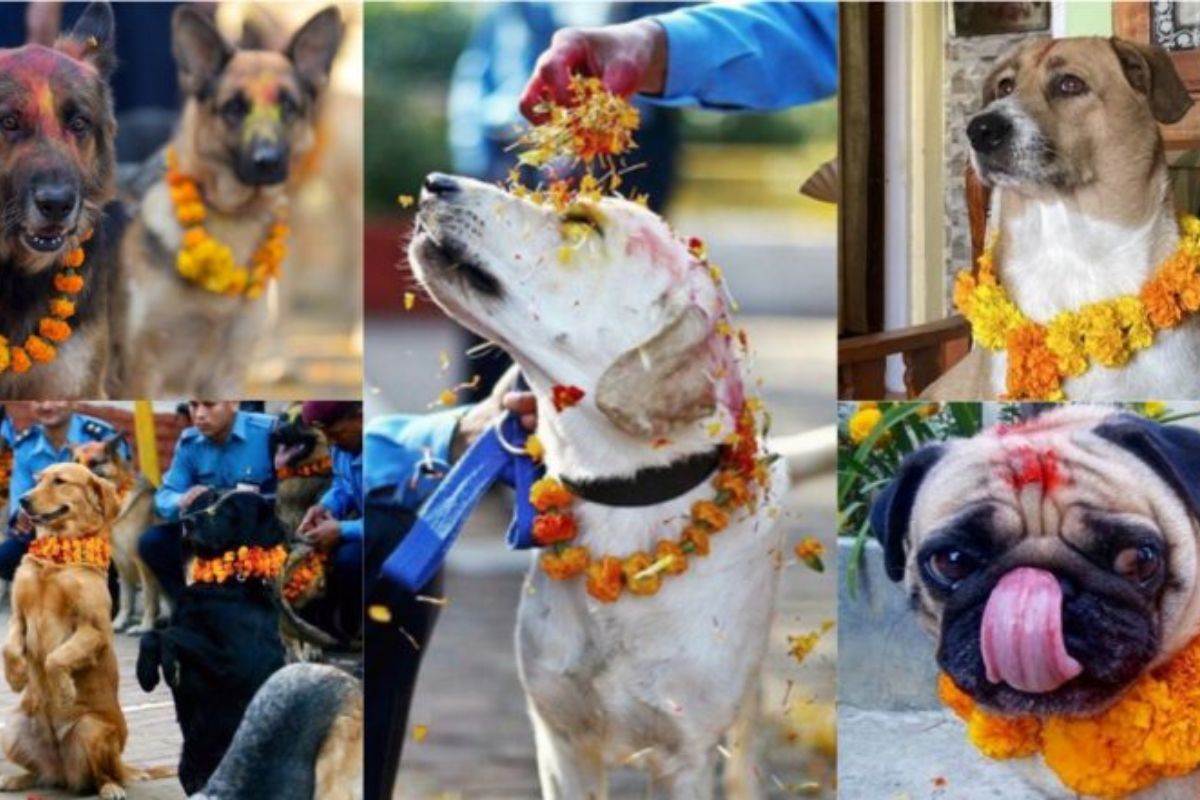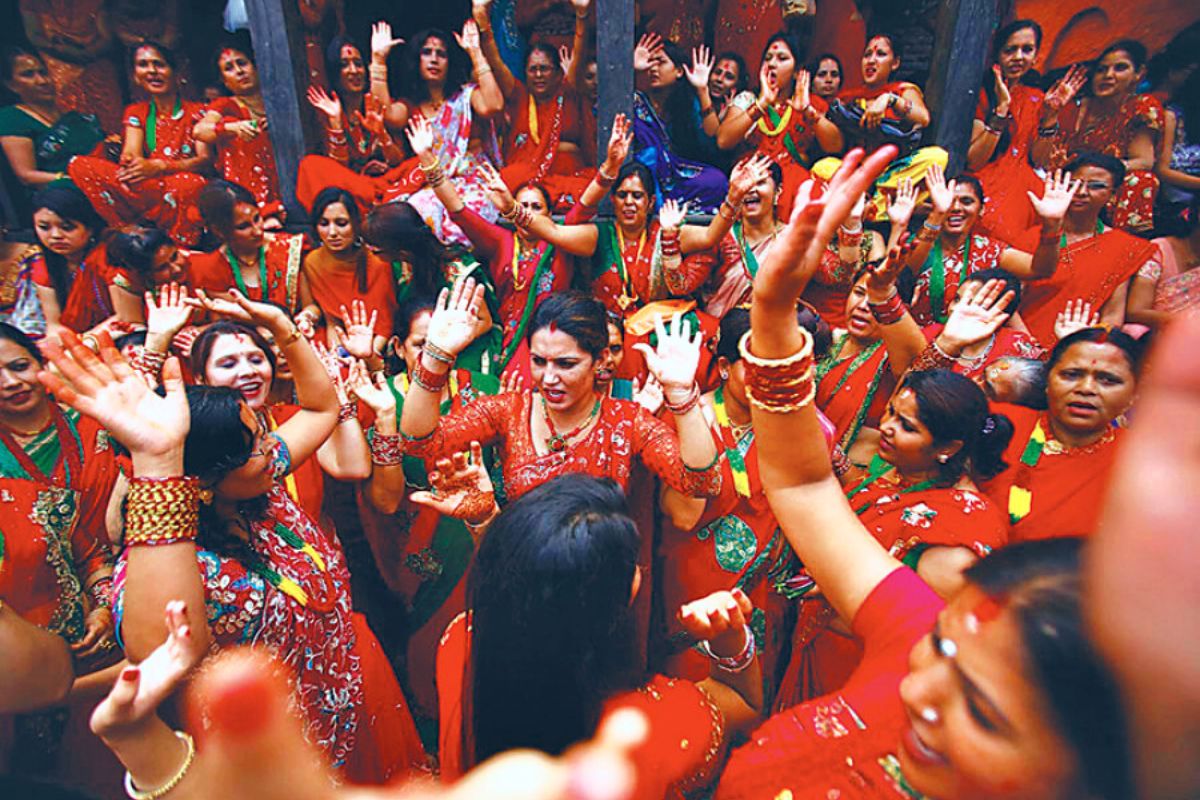
Upcoming Festivals In Nepal 2025/ 2026 Dates

Upcoming Festivals In Nepal 2025/ 2026 Dates
swotah travel
32527
25, 12 2022
Like most people, you probably think of Nepal as a majestic, once-in-a-lifetime destination for a vacation—not a place to attend festivals. But what if we told you that some of the world's most unique and exciting festivals take place in Nepal?
Nepal is a landlocked country in southern Asia, between India and Tibet. It is home to many different ethnic groups and religions, which is reflected in the various festivals celebrated here. Some popular festivals include Dashain, Tihar, Chhat, Holi, and many others.
As data shows, Nepal features more than 125 castes and ethnic groups, and more than 123 languages are spoken. Every caste and ethnic group has its background, culture, norms, and traditions. With every culture, there comes the occasion of celebration, and that is distinguished as Festivals in Nepal.
We have seen the whole of Nepal celebrating main festivals like Dashain. Some festivals are celebrated by only certain ethnic groups and communities, such as Bisket Jatra, Lhosar, and more. The list goes on.
Don't be surprised to know that the Nepalese calendar is packed with colorful religious and cultural festivals. And the best part is, the 2025/ 2026 festival dates are just around the corner!
So, what are you waiting for? Here's your insider's guide to Nepal's top festivals with dates you definitely want to attend!
Overview of Festivals in Nepal
Undoubtedly, Nepal is widely famous for its festivals. There are many different types of celebrations, each with its unique purpose and meaning.
The Dashain, Tihar, and Newari festivals are some of the most famous.
These are all major Hindu festivals that are celebrated throughout the country. The Dashain festival is celebrated in September or October, the most important festival in Nepal. It denotes the victory of good over evil and is a time when families come together to celebrate.
The Tihar festival is celebrated in November or December, also known as the Festival of Lights. It denotes the victory of light over darkness and is a time when friends and family members exchange gifts with each other.
The Newari festival is celebrated in January or February, celebrating Newar culture. It features traditional music, dance performances, and food stalls where you can try traditional Nepali food.
October 10 - 14 | Dashain: Nepal's Biggest Festival
Dashain is the biggest festival in Nepal celebrated by all communities. It takes place in September and celebrates the victory of good over evil. The festival's primary focus is the worship of Durga, the Hindu goddess who represents strength and power.

Many rituals and ceremonies occur during Dashain when families come together to celebrate. Houses are decorated with flags and flowers, and traditional food is cooked. Animal sacrifices are also a part of the festivities, with goats being the most popular offering.
Ghatasthapana is the first day of Dashain - it is the time for sowing the pure seeds of barley, which is used while putting tika later. The 7th day of Dashain is Fulpati, which is the day for worshipping the goddess Durga with all hearts. Thousands of people bring the Holy Fulpati from Gorkha to Kathmandu on this day. Similarly, the initiation of giving animal sacrifices to Goddess Durga starts from this day.
The next day is Ashtami, and most communities have a religious function called Kaal Ratri at night. Similarly, the 9th day is Navami - the worship of Durga does not stop, and the sacrifices.
The tenth day of Dashain is significant to all Nepalese people. It is the day of worshipping Durga and putting Tika from the elders. The culture of receiving blessings from your elders is one of the most exciting things of this day. And the process goes until the 15th day, which is also the last day of Dashain.
Since the main festival Dashain comes once a year, every Nepalese citizen tends to make it worthwhile financially and emotionally.
September 10 - October 4 | Tihar: Festival of Light
You might have seen the city lights of Paris or New York City, but what if we told you Nepal during Tihar remains above any lighting city in the world? It's the fact that you can experience uncountable lights during Tihar; that's why it is called the festival of lights.

Tihar is the second biggest festival in Nepal. History tells that Tihar was initiated as a winning party of Lord Rama against the monster Ravana, which was celebrated with big lights and presents.
The celebration starts with the worship of animals first. People worship crows, dogs, and cows in the initial phase. And the last day is the worshipping day of brothers - sisters worship their brothers for eternity and prosperity. The sisters are busy making their brother happy with several delicious meals and blessings while the brother gives them presents and gifts.
In the Newar community, this day is called 'Mha: Puja.'
March 13, 2025 | Holi: Welcome Springtime With Colorful Celebrations
The arrival of spring is always celebrated with a joyous festival called Holi. This Hindu festival marks the end of winter and the beginning of spring, and it's a time when people come together to enjoy a colorful celebration.

Holi is celebrated by people throwing brightly colored powder and water at each other. It's a time for fun, laughter, and family gatherings. The streets are filled with music and people enjoying the festivities. If you plan to visit Nepal in 2023, take advantage of the Holi celebrations!
September 6 | Teej: A Festival of Empowerment for Women
Teej is a festival that celebrates womanhood, and it falls on the third day of the bright half of the Nepali month of Shrawan. This festival is extra special because it was my mom's favorite festival.

On Teej, women get all dressed up in red saris, wear lots of jewelry, and apply red powder to their foreheads. It's a beautiful sight, let me tell you! Then they head off to worship Lord Shiva and Parvati at one of the temples.
After that, they fast for the entire day, and some even stay up all night singing and dancing. The next day, they break their fast with a delicious meal of fruits, vegetables, curd, and sweets.
Teej is an enjoyable festival but also essential to Nepali women. It's a time for us to unite and celebrate our strength and power.
August 20 | Gai Jatra: Celebrating the Lives of the Departed
Gai Jatra is the festival of cows - it is celebrated in August or September. People dress up as cows during this time and parade through the streets.
This festival is a way of remembering and celebrating the lives of loved ones who are already deceased. It's believed that by dressing up as a cow, one can guide the recently departed soul on its journey to the afterlife.
February 26, 2025 | Maha Shivaratri: Honoring Lord Shiva
Maha Shivaratri, which means "The Great Night of Shiva," is one of Nepal's most revered Hindu festivals. It is celebrated with great devotion and enthusiasm across the country. Falling on the 14th day of the dark fortnight in the Nepali month of Falgun (February/March), the festival is dedicated to Lord Shiva, the god of destruction and transformation.
On this day, devotees gather at temples, especially at Pashupatinath Temple in Kathmandu, which is one of the holiest shrines for Shiva worshippers. Thousands of pilgrims, including ascetics (sadhus) from India and Nepal, visit the temple to offer prayers and perform rituals.
The festival is marked by:
- Fasting and Night Vigils: Devotees fast throughout the day and stay awake all night, singing hymns and chanting "Om Namah Shivaya."
- Ritual Bathing: Shiva Lingams are bathed with milk, honey, and ghee as offerings.
- Sacred Fires: Bonfires are lit in temple courtyards, symbolizing the burning of ignorance and ego.
- Cultural Celebrations: Some communities celebrate with music, dance, and storytelling about the legends of Lord Shiva.
Maha Shivaratri is not just a religious event but also a spiritual and cultural experience that attracts both locals and tourists to Nepal. The festive atmosphere, especially around Pashupatinath Temple, makes it a remarkable sight to behold.
April 13, 2025, | Bisket Jatra: The Thrilling Nepali New Year Celebration
Bisket Jatra is one of the most electrifying festivals in Nepal, celebrated primarily in Bhaktapur to mark the start of the Nepali New Year according to the Bikram Sambat calendar. This ancient festival is deeply rooted in local mythology and is renowned for its dramatic rituals and colourful celebrations.
Highlights:
- Chariot Processions: Massive wooden chariots of Lord Bhairab and Goddess Bhadrakali are pulled through the narrow streets of Bhaktapur in a tug-of-war-style competition between the city's neighbourhoods.
- Mythological Significance: The festival is believed to re-enact events from local legends, adding a mythical aura to the festivities.
- Cultural Dances: Traditional music and dance performances enhance the vibrant atmosphere, showcasing the rich Newari culture.
- Lingam Raising Ceremony: A giant ceremonial pole (lingam) is erected and later symbolically toppled, marking the victory of good over evil.
Bisket Jatra is a unique opportunity to experience the cultural heritage, energy, and unity of the Newar community. Whether you’re there to witness the lively chariot processions or immerse yourself in the festive spirit, this is a celebration you won’t forget.
NEWSLETTER SIGNUP
Sign up to receive our trip ideas and travel offers!
Get updates and Exclusive Offers up to 20% Discount








